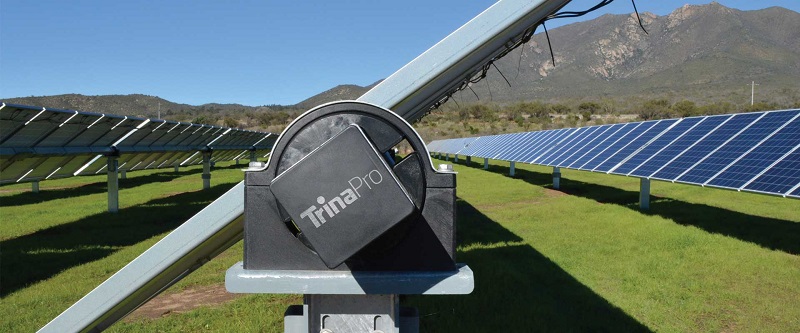With the continuous deepening of international trade barriers and limited by import and export restrictions, the construction of factories in the United States has become a topic of concern for photovoltaic companies in the past two years.
Data shows that from 2019 to 2021, the newly installed photovoltaic capacity in the United States was 13.3GW, 19.7GW, and 23.6GW, respectively, making it the second largest single photovoltaic market in the world. The prospects for the US photovoltaic industry market are promising. Coupled with the announcement of various local manufacturing incentive policies in the United States, domestic photovoltaic companies have successively set up factories in the United States.
So, what are the risks of building a factory in the United States? What conditions need to be met? What are the business models? What are the popular manufacturing areas? With these questions in mind, PV Tech conducted an exclusive interview with Mr. Yuan Haiyang, the founder and CEO of China US Photovoltaic Industrial Park and Grape Solar Energy Company.
Dialogue guest: Yuan Haiyang

Founder and CEO of China US Photovoltaic Industrial Park and Grape Solar Energy Company
The following is an interview transcript:
SUN: Since last year, the number of Chinese photovoltaic companies going to the United States to build factories has increased, and there has been a significant increase in intentional enterprises. Can you briefly analyze the reasons and background behind this?
Yuan Haiyang: There are various reasons that have led to the situation you are currently seeing: The direct reason is that the Inflation Reduction Act passed by the United States in August last year provides subsidies of up to 50% or more to enterprises investing in new energy products in the United States, with a validity period of up to 10 years. For example, the subsidy for silicon materials that you are familiar with is $3 per kilogram, $12 per square meter for silicon wafers, $4 per watt for battery cells, and $7 per watt for assembly, all of which have very detailed and specific subsidies.
The second important reason is that the United States regards new energy products as its "new oil", which is a strategic material for the 21st century, to ensure the security of its supply chain. Therefore, a series of trade and non-trade self-protection measures have been set up, such as the dual anti trade measures against Chinese products and even restrictions on products from Southeast Asia, making them lose competitiveness and thus enhancing the advantage of American manufacturing. Overall, the national policy of the United States is for manufacturing to return to China, especially for new energy products. In such a situation, if you do not set up a factory in the United States, then the American market will be out of reach for you.
SUN: We have noticed that different companies choose different locations for their factories based on different considerations. At present, photovoltaic manufacturing in the United States also presents different regional distributions. Based on your observation, what are the advantages and disadvantages of these popular manufacturing locations?
Yuan Haiyang: Overall, the United States is vast and sparsely populated, surrounded by the sea on three sides, with significant geographical differences in natural conditions. The market and resources are also distributed. Some states have a high population density and a large household market, but the costs of water, electricity, real estate, labor, and taxes are expensive, such as in California. But California has a population of 40 million and a large market. For example, in Texas, which is the same size, real estate is cheap, but property taxes are high. Although there is no sales tax, the market is large and industrial land is abundant. It is more suitable to produce large products such as components, but water and electricity costs are expensive.
If you are running a silicon wafer battery factory, you should choose a state with relatively low water and electricity costs. For example, Washington and Oregon have electricity bills of around four cents per kilowatt hour, water is basically free, and the semiconductor industry has a foundation of over 50 years, with a large number of talents. For example, the total population of Oregon only accounts for 1.3% of the United States, but the semiconductor industry accounts for 15% of the population. Intel's largest industrial base is located in the Portland area of Oregon. REC's silicon material factory is located in Washington State.
But a large-scale component factory has an advantage in Nevada, Texas. Of course, there are also exceptions. For example, the recently popular Silfab has set up component factories and battery cell factories in the north of Washington State. Recently, the financing has been very successful, raising $120 million to produce battery cells. Furthermore, the United States has a three-level government tax system: in addition to federal or national income tax, state governments also collect income tax (a few states do not), and county governments collect property tax. Here is a mention of the property tax of the county government, which may not be familiar to Chinese friends. Simply put, individuals and companies who own real estate are required to pay property tax, such as the real estate tax, which is generally 1.5%, and some are higher. If you own machinery and equipment, you also need to pay property tax, which is a significant amount of money for heavy asset investments. Of course, due to the reasons mentioned above, both state and county taxes can be negotiated and reduced with the local government. The reduction period is generally 3 to 5 years, and the subsequent 15 years can also be reduced.
SUN: For enterprises, building factories in the United States is an important strategic layout. Which companies do you think need or are suitable for building factories in the United States?
Yuan Haiyang: In terms of the photovoltaic industry, the United States lacks everything, just like China 15 years ago. Silicon materials, silicon wafers, battery cells, components, and packaging materials for components, such as aluminum alloy, EVA, POE, glass, junction boxes, are almost non-existent. Inverters and energy storage batteries are important products that are rarely manufactured in the United States. The demand in the United States is 50GW/year in the short term and 100GW/year in the medium to long term, which means these products are worth manufacturing in the United States and are suitable for these companies. From a strategic perspective, manufactured in the United States can not only be consumed domestically, but its natural advantage is that it can also be smoothly exported to developed countries, such as Japan and European markets. Products made in the United States have strong competitiveness.
SUN: So what conditions do companies need to meet to establish factories in the United States? What aspects do you think companies need to pay attention to? How to avoid risks?
Yuan Haiyang: For Chinese enterprises, several key conditions or challenges for setting up factories in the United States are: firstly, different ways of thinking lead to a series of consequences, which is the biggest problem. For example, many bosses take it for granted with Chinese style thinking; For example, legal issues in the United States are very segmented, and not just one lawyer can answer all questions. Each lawyer may only help you solve one aspect of the problem, including tax lawyers, import and export lawyers, labor law lawyers, and so on. The law must go first, and this expenditure must have a budget, otherwise there will be endless consequences. Secondly, Chinese companies coming to the United States also need to budget for public image and other expenses, including public relations/work visas/government subsidies and other service institutions, which require professionals to do. However, these are not issues in China and require a budget in the United States.
SUN: As far as you know, what policy support or discounts can you currently enjoy when building a factory in the United States? What are the most practical?
Yuan Haiyang: The United States has a three-level government that collects taxes, and incentive policies are basically obtained from the three-level government. At the federal level, subsidy policies such as the Impact Reduction Act and CHIP ACT are all related to the solar energy industry. Each department of the federal government also has different subsidies, such as the DOE Department of Energy and the DOA Department of Agriculture, which have a large amount of subsidies. However, professional personnel are required to write applications. If you spend 100000 US dollars to ask someone to write applications, you will receive subsidies of millions, tens, or even billions of US dollars. This type of case comparison is common. State level subsidies are usually low interest long-term loans, which are used for fixed assets investment. For example, Oregon has several hundred million dollars of low interest long-term loans every year, with an annual interest rate of no less than 1%. The reduction and exemption of property tax by the county government is also very practical.
SUN: What are the current business models for manufacturing photovoltaic products in the United States?
Yuan Haiyang: Currently, there are several business models for manufacturing photovoltaic products in the United States. Firstly, Han Hua has established a supply chain ecosystem in the United States. The second is for companies from all over the world to establish separate factories in the United States, such as Meyer Burger. The third method is also our concept of Sino US photovoltaic industrial park. The Chinese people go to sea together to share the various high-end service costs mentioned above, enhance competitiveness, and take care of each other. Factories can set up factories in different places according to different products, but they can cooperate with each other in the form of contracts to create a new way for the Americanization of Made in China.
SUN: How do you see the development prospects of domestic photovoltaic manufacturing in the United States?
Yuan Haiyang: Manufacturing in the United States has been a world leader for over 100 years, but it has only lagged behind in the solar energy field in the past 15 years. As a reminder, 15 years ago, the United States exported silicon materials to China. To this day, the United States still exports a large number of raw materials to China to manufacture glass and battery chips, such as quartz sand and soda ash, which are the most talked about raw materials in the circle recently. When I met President Biden himself, I said it was time for the United States to use raw materials for domestic manufacturing. He said, 'You want to save the planet!'! Made in the United States is actually a major trend of returning to the domestic market, especially since the pandemic. The American nation deeply feels that the globalization promoted by Clinton 30 years ago in the United States needs to be completely changed, that is, from globalization to global localization. In English, it means from globalization to localization, and the next 30 years will be such a grand process.

